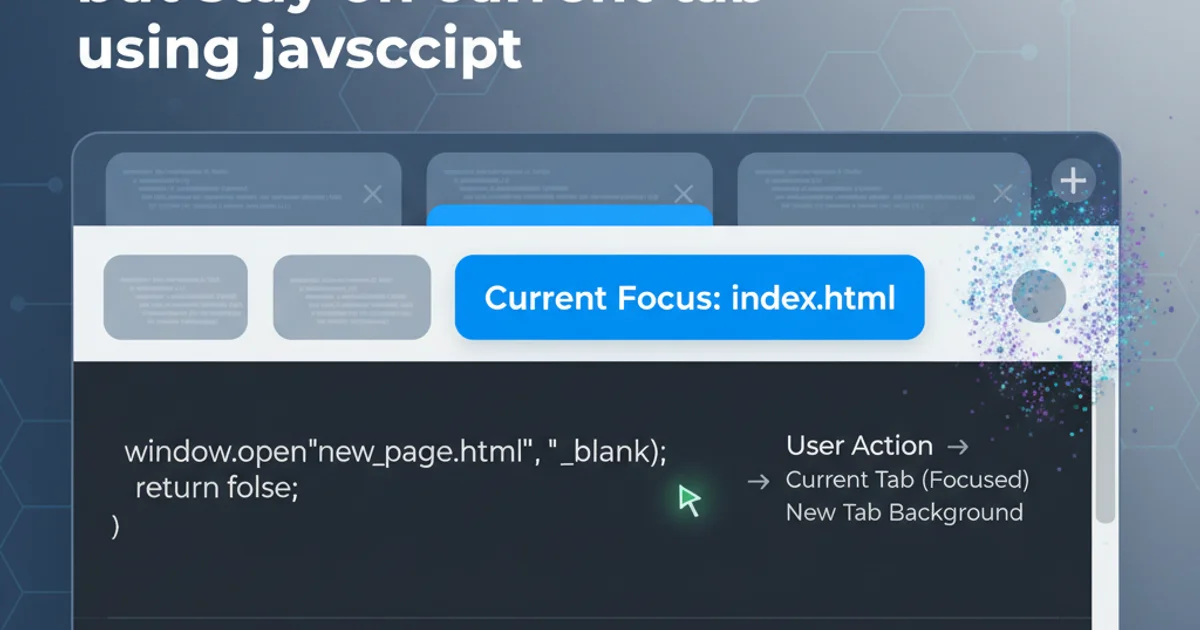iPhone iPad is it possible to completely disable screen interaction and gestures programmatically?
Categories:
Completely Disabling Screen Interaction on iOS (iPhone/iPad)

Explore the techniques and limitations of programmatically disabling user interaction and gestures on iPhone and iPad devices, focusing on practical implementation and best practices.
Developing for iOS often requires fine-grained control over user interaction. There are scenarios where you might need to temporarily or even completely disable all screen interaction and gestures on an iPhone or iPad. This could be for displaying an overlay, preventing accidental input during a critical operation, or guiding the user through a specific flow. This article delves into the methods available in UIKit to achieve this, their implications, and when to use each approach.
Understanding User Interaction in UIKit
UIKit provides several mechanisms to manage user interaction. At its core, every UIView has an isUserInteractionEnabled property. When set to false, that specific view and all its subviews will not respond to touch events. However, simply disabling interaction on a single view might not be sufficient if you need to block interaction across the entire screen or multiple views simultaneously. Understanding the view hierarchy and event delivery is crucial for effective interaction management.
flowchart TD
A[Touch Event] --> B{Is `isUserInteractionEnabled` true?}
B -->|No| C[Event Ignored]
B -->|Yes| D{Is view hidden or alpha < 0.01?}
D -->|Yes| C
D -->|No| E[Hit-testing `point(inside:with:)`]
E --> F{Does view contain point?}
F -->|No| C
F -->|Yes| G[Deliver to `touchesBegan(_:with:)`]Simplified iOS Touch Event Delivery Flow
Methods for Disabling Interaction
There are primarily three effective ways to disable screen interaction programmatically, each with its own scope and use cases:
1. Disabling isUserInteractionEnabled on a Specific View
This is the most granular approach. You can disable interaction for any UIView or its subclasses. This is useful when you want to prevent interaction with a particular button, text field, or a section of your UI, while allowing other parts to remain interactive.
// Disable interaction for a single view
myButton.isUserInteractionEnabled = false
// Re-enable interaction
myButton.isUserInteractionEnabled = true
Disabling and re-enabling interaction for a single UIView.
2. Disabling Interaction on the Entire Window
To disable interaction across the entire application window, you can set isUserInteractionEnabled on the UIWindow object. This is a powerful method that effectively blocks all touch events from reaching any view within that window. This is ideal for scenarios like showing a loading spinner that covers the entire screen, or during a critical data synchronization process where any user input could lead to inconsistencies.
// In your UIViewController or AppDelegate
// Disable all user interaction on the main window
if let window = UIApplication.shared.windows.first {
window.isUserInteractionEnabled = false
}
// Re-enable all user interaction
if let window = UIApplication.shared.windows.first {
window.isUserInteractionEnabled = true
}
Disabling and re-enabling interaction for the entire application window.
UIApplication.shared.windows.first is generally safe for single-window applications. For multi-window setups (e.g., iPad multi-tasking or external displays), you might need to iterate through UIApplication.shared.windows and disable interaction on specific windows.3. Overlaying a Transparent View
Another common technique is to add a transparent (or semi-transparent) view that covers the entire screen. This overlay view can then have its isUserInteractionEnabled property set to true (to capture touches) or false (to allow touches to pass through, which is usually not the goal when disabling interaction). If the overlay view is interactive, it effectively 'eats' all touch events, preventing them from reaching the views beneath it. This method is often preferred when you also want to display some visual feedback (like a loading indicator or a modal message) while interaction is disabled.
func showBlockingOverlay() {
let overlayView = UIView(frame: UIScreen.main.bounds)
overlayView.backgroundColor = UIColor.black.withAlphaComponent(0.3) // Semi-transparent background
overlayView.tag = 999 // A unique tag to easily find and remove it
// Add a spinner or message if needed
let activityIndicator = UIActivityIndicatorView(style: .large)
activityIndicator.center = overlayView.center
activityIndicator.startAnimating()
overlayView.addSubview(activityIndicator)
// Ensure the overlay captures all touches
overlayView.isUserInteractionEnabled = true
// Add to the key window or the view controller's view
if let window = UIApplication.shared.windows.first(where: { $0.isKeyWindow }) {
window.addSubview(overlayView)
} else if let rootVC = UIApplication.shared.delegate?.window??.rootViewController {
rootVC.view.addSubview(overlayView)
}
}
func hideBlockingOverlay() {
if let window = UIApplication.shared.windows.first(where: { $0.isKeyWindow }) {
window.viewWithTag(999)?.removeFromSuperview()
} else if let rootVC = UIApplication.shared.delegate?.window??.rootViewController {
rootVC.view.viewWithTag(999)?.removeFromSuperview()
}
}
Using a transparent overlay view to block user interaction.
Disabling Gestures Specifically
While disabling isUserInteractionEnabled will prevent all touches, including those that would trigger gestures, you might sometimes want to disable specific gesture recognizers without affecting other interactions on a view. Each UIGestureRecognizer has an isEnabled property that can be toggled.
// Assuming you have a tap gesture recognizer attached to a view
let tapGesture = UITapGestureRecognizer(target: self, action: #selector(handleTap))
myView.addGestureRecognizer(tapGesture)
// Disable the specific tap gesture
tapGesture.isEnabled = false
// Re-enable the specific tap gesture
tapGesture.isEnabled = true
Disabling and re-enabling a specific UIGestureRecognizer.
Considerations and Best Practices
When disabling user interaction, keep the following in mind:
- User Experience: Always provide visual feedback when interaction is disabled (e.g., a loading spinner, a dimmed overlay). Users should understand why their input isn't working.
- Scope: Choose the narrowest scope necessary. If only a button needs to be disabled, disable only that button. If the entire screen needs to be blocked, use the window or an overlay.
- Re-enabling: Crucially, always remember to re-enable interaction once the blocking condition is resolved. Forgetting to do so will leave your app unresponsive.
- Accessibility: Consider how disabling interaction affects users with accessibility needs. Ensure that any blocking state is communicated appropriately, perhaps through
UIAccessibility.post(notification:argument:). - Animation: When adding or removing overlay views, consider animating their appearance/disappearance for a smoother user experience.